14 Must-Visit UNESCO World Heritage Sites
Standing before a UNESCO World Heritage Site is like witnessing history itself—these carefully protected locations represent humanity’s greatest achievements, natural wonders, and cultural treasures.
Each site has earned its place on this prestigious list by demonstrating outstanding universal value that transcends national boundaries and speaks to all of humanity.
As of July 2024, a total of 1,223 World Heritage Sites (952 cultural, 231 natural and 40 mixed cultural and natural properties) exist across 168 countries. These sites face rigorous evaluation criteria and must meet at least one of six cultural or four natural criteria to earn their designation. The result is a collection of places that represent the very best of human creativity, natural beauty, and cultural significance.
From ancient temples that have stood for millennia to pristine wilderness areas that harbor unique ecosystems, UNESCO World Heritage Sites offer travelers the opportunity to experience places of truly exceptional importance. This guide explores 15 must-visit sites that showcase the incredible diversity and universal value of our world’s protected heritage.
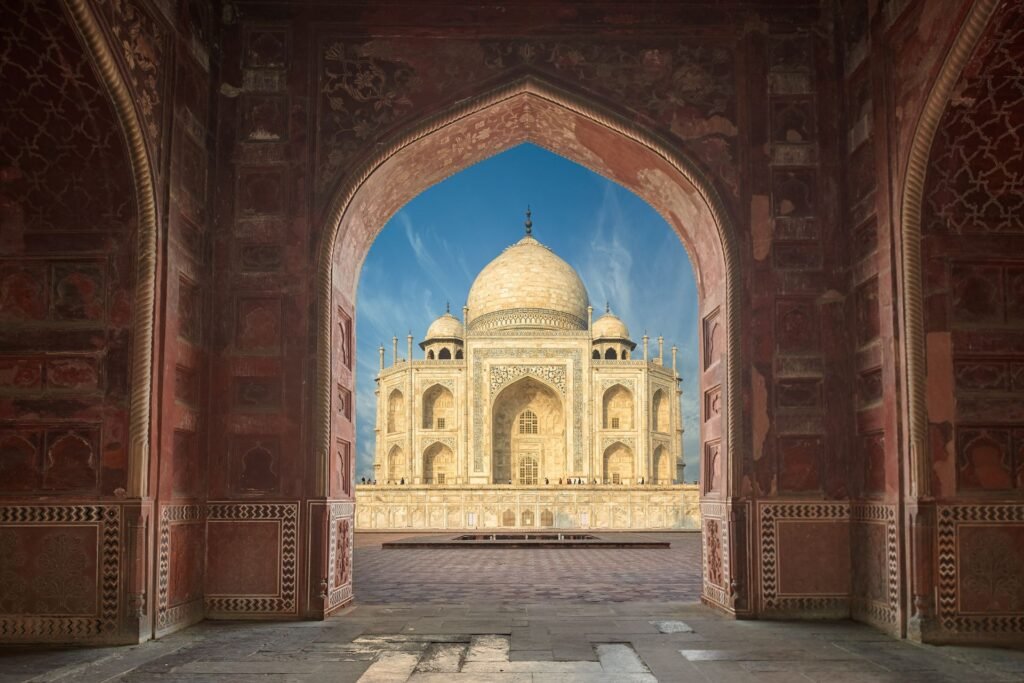
1. Taj Mahal, India – The Crown Jewel of Mughal Architecture
The Taj Mahal is considered to be the greatest architectural achievement in the whole range of Indo-Islamic architecture. This breathtaking mausoleum in Agra represents the pinnacle of Mughal craftsmanship and stands as an enduring symbol of love and devotion.
Built by Emperor Shah Jahan as a tomb for his beloved wife Mumtaz Mahal, the Taj Mahal combines elements of Islamic, Persian, and Indian architectural traditions into a harmonious masterpiece.
The white marble structure changes color throughout the day, appearing pink at dawn, white during the day, and golden under moonlight, creating a constantly evolving visual experience.
The complex includes not just the famous mausoleum but also a mosque, guest house, and formal gardens that follow traditional Persian design principles.
The intricate inlay work, calligraphy, and geometric patterns demonstrate the incredible skill of the artisans who created this wonder over 22 years of construction.
Visiting the Taj Mahal requires planning, as daily visitor numbers are limited to protect the monument. The best viewing times are early morning and late afternoon when the marble glows with warm light and crowds are smaller. The site attracts over 8 million visitors annually, making it one of the world’s most popular heritage destinations.
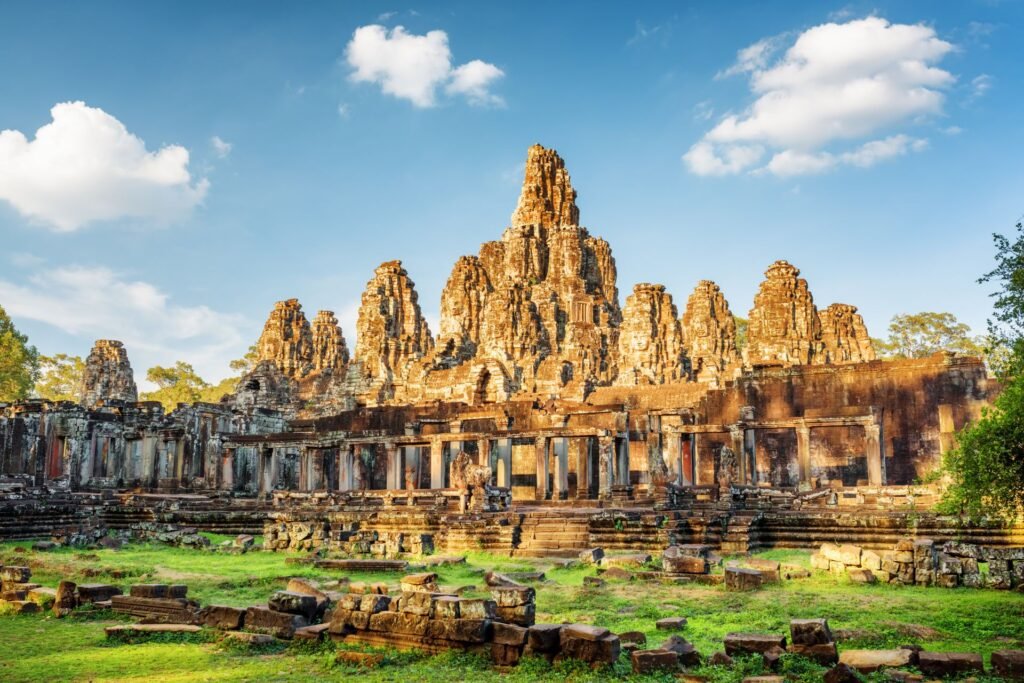
2. Angkor Archaeological Park, Cambodia – The Lost Capital of the Khmer Empire
Angkor is the archeological site covering the capital of the Khmer Empire and its artistic masterpieces. This sprawling complex in Cambodia represents one of the most important archaeological sites in Southeast Asia, encompassing the remnants of capital cities that flourished from the 9th to 15th centuries.
The most famous temple, Angkor Wat, stands as the world’s largest religious monument and represents the pinnacle of Khmer architecture. Originally built as a Hindu temple dedicated to Vishnu, it later transformed into a Buddhist temple, reflecting the religious evolution of the Khmer Empire. The temple’s five towers symbolize Mount Meru, the center of the universe in Hindu cosmology.
Beyond Angkor Wat, the archaeological park contains over 100 temples scattered across 400 square kilometers. The Bayon temple, with its massive stone faces gazing in all directions, offers a different but equally mesmerizing experience. Ta Prohm, partially reclaimed by jungle growth, demonstrates the power of nature and the fragility of human achievements.
The intricate bas-reliefs throughout the complex tell stories from Hindu epics and provide invaluable insights into Khmer history, religion, and daily life. These carved narratives serve as stone books, preserving cultural knowledge for future generations.

3. Great Wall of China – The Ultimate Monument to Human Determination
Stretching over 13,000 miles across northern China, the Great Wall represents one of humanity’s most ambitious construction projects. This massive fortification system, built over many centuries by different dynasties, demonstrates the incredible organizational capacity and determination of Chinese civilization.
The wall we see today primarily dates from the Ming Dynasty (1368-1644), though sections were built as early as the 7th century BC.
The structure includes not just the wall itself but also watchtowers, garrison stations, and beacon towers that formed a comprehensive defense system. The wall’s design adapted to local topography, winding through mountains, deserts, and grasslands.
Different sections offer varying experiences for visitors. The Mutianyu section provides well-preserved wall segments with spectacular mountain views, while Jinshanling offers a more challenging hike through less restored sections. The popular Badaling section, closest to Beijing, provides easy access but attracts the largest crowds.
The Great Wall’s construction required massive human sacrifice, with hundreds of thousands of workers dying during its building. This sobering history adds depth to the experience of walking along these ancient fortifications, reminding visitors of the human cost of monumental achievements.
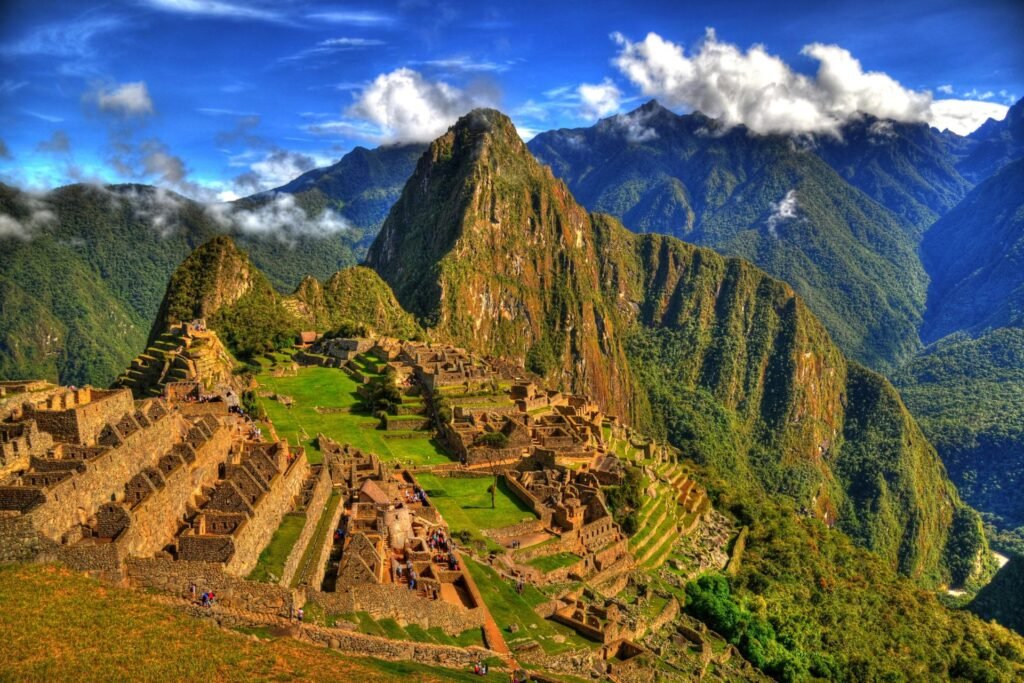
4. Machu Picchu, Peru – The Lost City of the Incas
Perched dramatically on a mountain ridge 2,430 meters above sea level, Machu Picchu represents one of the most spectacular archaeological sites in the world.
This remarkably preserved Incan citadel, built in the 15th century and abandoned during the Spanish conquest, remained hidden until American historian Hiram Bingham brought it to international attention in 1911.
The site’s location demonstrates the Incas’ sophisticated understanding of astronomy, agriculture, and engineering. The carefully planned city includes residential areas, religious temples, agricultural terraces, and sophisticated water management systems. The precision of the stone construction, achieved without mortar, continues to amaze engineers and archaeologists.
The Intihuatana stone, a precisely carved granite pillar, serves as an astronomical clock that tracks the sun’s movement throughout the year. During the winter solstice, the sun sits directly above the pillar, casting no shadow—a demonstration of Incan astronomical knowledge.
Access to Machu Picchu is strictly limited to preserve the site, requiring advance booking and permits.
The classic approach via the Inca Trail offers a multi-day hiking experience through diverse ecosystems and lesser-known Incan ruins, though alternative routes are available for those seeking easier access.
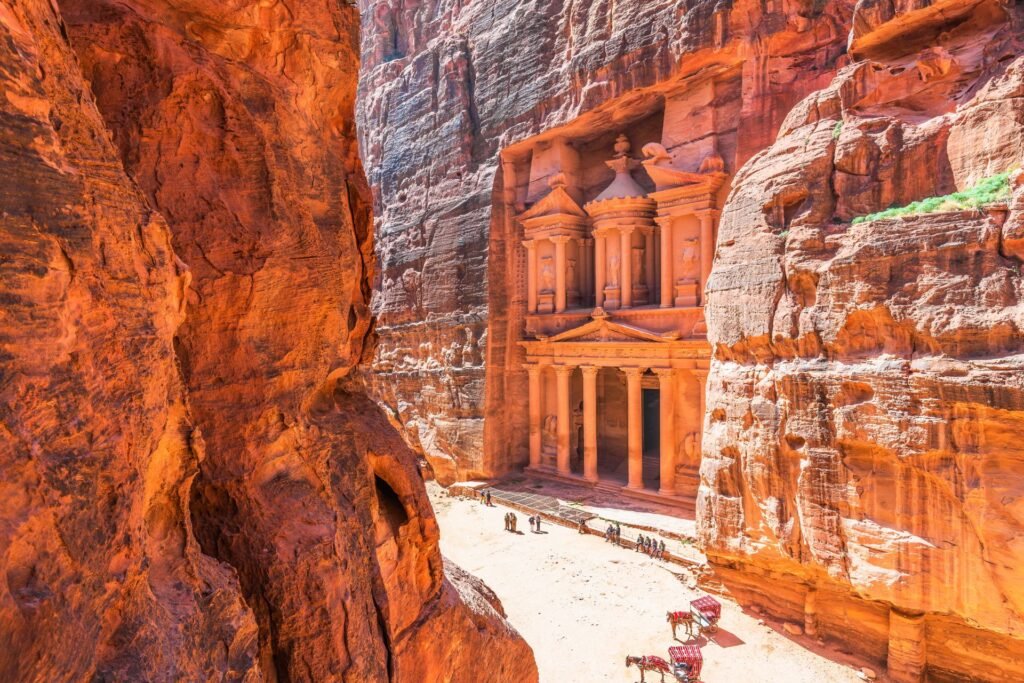
5. Petra, Jordan – The Rose-Red City Carved from Stone
The ancient city of Petra, hidden in the mountains of southern Jordan, represents one of the world’s most extraordinary archaeological sites.
This Nabataean capital, dating from the 4th century BC, showcases the incredible artistry and engineering skills of its builders who carved elaborate facades directly into rose-colored sandstone cliffs.
The Treasury (Al-Khazneh), Petra’s most famous structure, serves as the dramatic entrance to the ancient city. This intricately carved facade, standing 40 meters high, demonstrates the Nabataeans’ sophisticated understanding of architecture and their ability to create monumental art from living rock.
Beyond the Treasury, Petra contains hundreds of tombs, temples, and other structures spread across a vast archaeological landscape. The Monastery (Ad-Deir), requiring a challenging hike to reach, offers equally impressive architecture with fewer crowds. The Royal Tombs showcase the variety of architectural styles and the skill of Nabataean craftsmen.
The Nabataeans’ success came from their control of ancient trade routes connecting Arabia, Egypt, and the Mediterranean.
Their sophisticated water management systems, including dams, cisterns, and channels carved into rock, allowed them to thrive in the desert environment and support a large population.
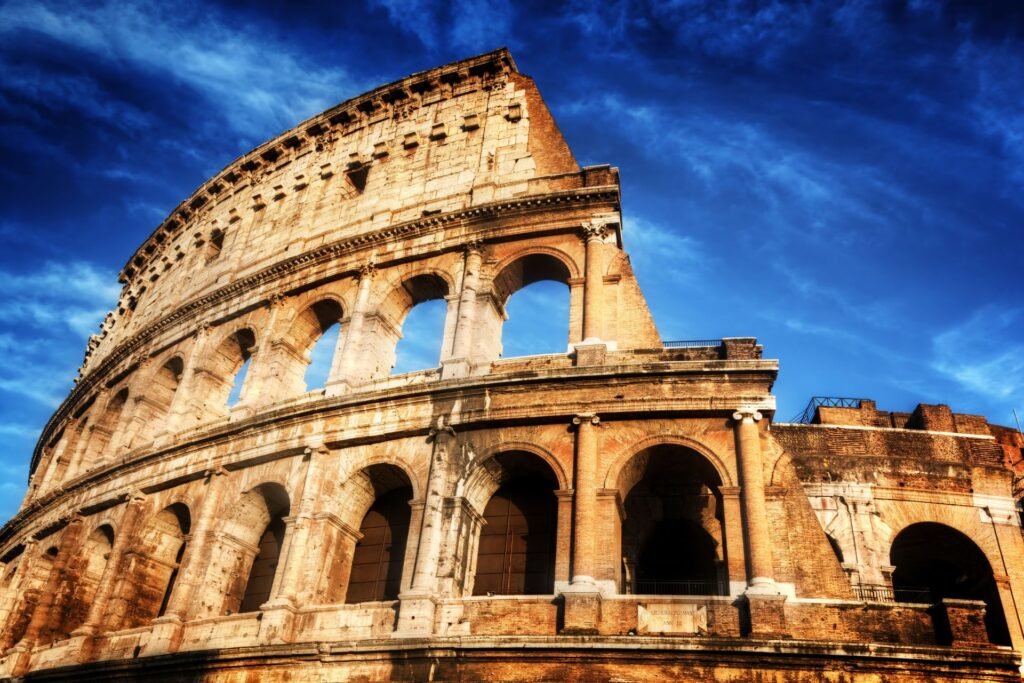
6. Colosseum, Rome – The Eternal City’s Greatest Arena
The Colosseum stands as the most iconic symbol of Roman engineering prowess and the brutal entertainment culture of the ancient world.
This massive amphitheater, completed in 80 AD, could hold up to 80,000 spectators and hosted gladiatorial contests, public spectacles, and dramas based on Classical mythology.
The structure’s innovative design features a complex system of underground chambers, elevators, and trap doors that allowed for elaborate stage effects. Wild animals, gladiators, and scenery could appear and disappear dramatically, creating spectacles that amazed audiences. The arena floor could even be flooded for naval battle reenactments.
The Colosseum’s architecture influenced amphitheater design throughout the Roman Empire. Its elliptical shape, multi-story facade, and innovative crowd control systems demonstrated Roman engineering expertise. The building’s concrete construction techniques were revolutionary and influenced architecture for centuries.
Today, the Colosseum serves as a powerful reminder of Roman civilization’s achievements and excesses.
The underground areas, once hidden, are now open to visitors, revealing the complex machinery that made the arena’s spectacular shows possible. The site attracts over 5 million visitors annually, making it one of Rome’s most popular attractions.
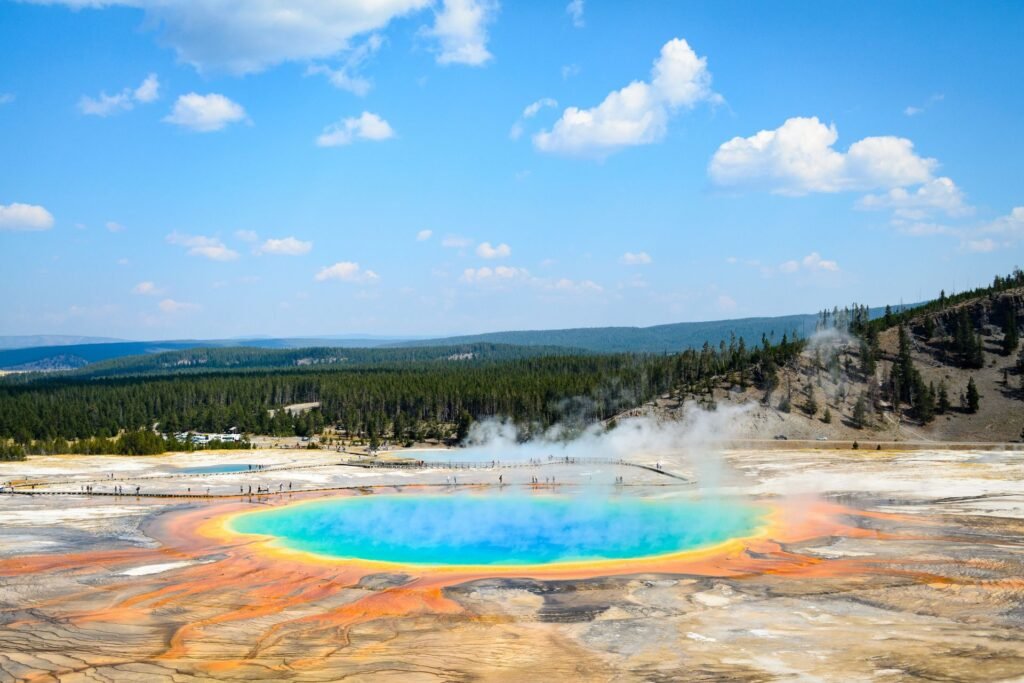
7. Yellowstone National Park, USA – The World’s First National Park
Yellowstone holds the distinction of being the world’s first national park, established in 1872, and represents one of the most complete and diverse ecosystems in the northern temperate zone.
This vast wilderness area spans 2.2 million acres across Wyoming, Montana, and Idaho, protecting an extraordinary array of geothermal features, wildlife, and pristine landscapes.
The park sits atop a massive volcanic caldera and contains the world’s largest collection of geysers, including the famous Old Faithful.
Over 10,000 thermal features create a landscape unlike anywhere else on Earth, with hot springs, mud pots, and steam vents demonstrating the powerful geological forces at work beneath the surface.
Yellowstone’s wildlife populations include some of North America’s most iconic species. Large herds of bison, elk, and deer roam the park’s grasslands and forests, while predators like wolves, bears, and mountain lions maintain the ecological balance. The park’s wolf reintroduction program has become a model for conservation efforts worldwide.
The park’s diverse ecosystems range from high-altitude mountains to river valleys, supporting over 1,000 plant species and providing habitat for 67 mammal species. The pristine wilderness areas offer opportunities for hiking, wildlife viewing, and experiencing nature largely unchanged from pre-European settlement times.
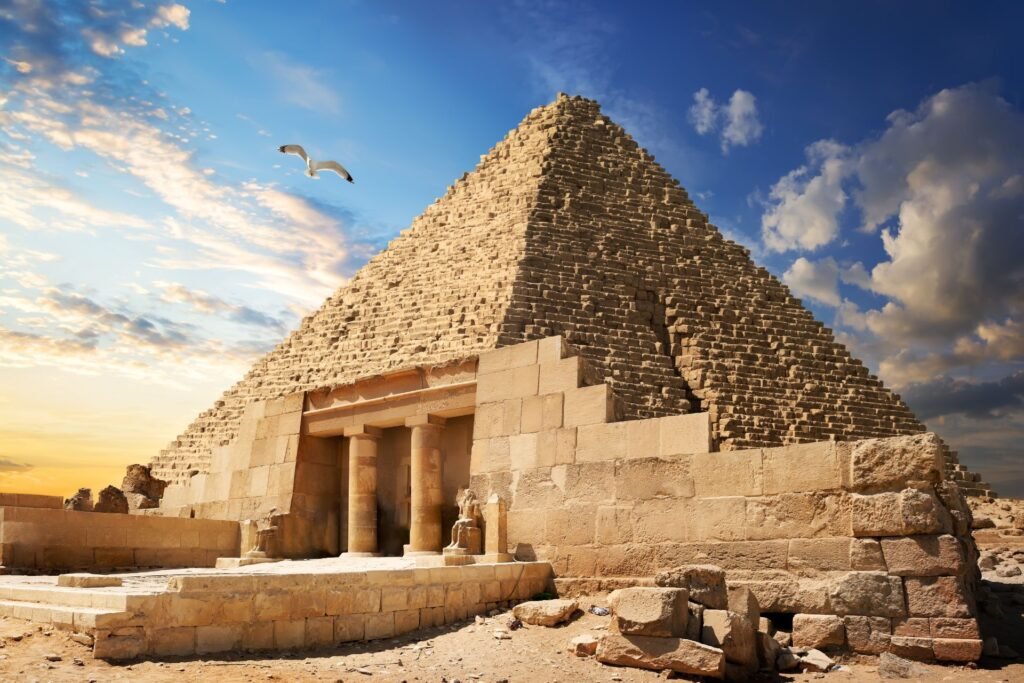
8. Pyramids of Giza, Egypt – Monuments to Eternal Power
The Pyramids of Giza represent humanity’s oldest and most enduring architectural achievements. These massive structures, built over 4,500 years ago, continue to inspire wonder and debate about the capabilities of ancient civilizations. The complex includes three main pyramids, the Great Sphinx, and numerous smaller structures that formed a complete necropolis for pharaohs and their families.
The Great Pyramid of Khufu, originally standing 146.5 meters tall, remained the world’s tallest man-made structure for nearly 4,000 years. Its construction required over 2 million stone blocks, each weighing between 2.5 and 15 tons. The precision of the construction, with the base accurate to within just 2 centimeters, demonstrates the sophisticated mathematical and engineering knowledge of ancient Egyptian builders.
The Great Sphinx, carved from a single piece of limestone, guards the pyramid complex with its human head and lion’s body.
This enigmatic monument continues to pose questions about its original purpose and the identity of its model, adding mystery to the site’s already impressive scale.
Recent archaeological discoveries continue to reveal new aspects of the pyramid complex, including evidence of the workers’ villages, ramps used in construction, and the sophisticated logistics required to complete such massive projects. These findings provide insights into ancient Egyptian society, labor organization, and building techniques.
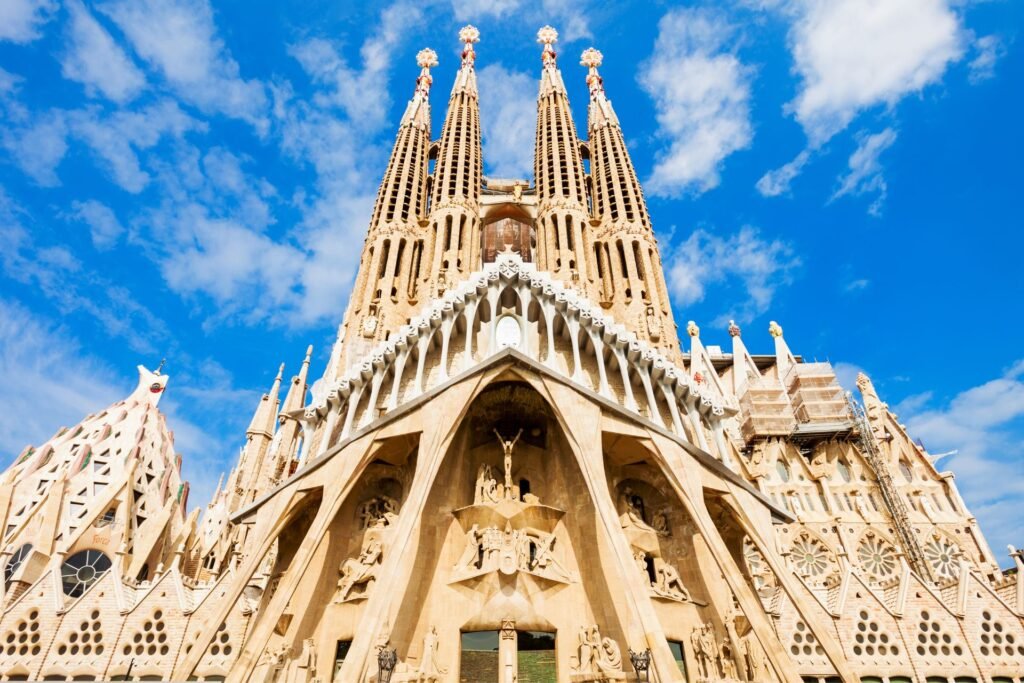
9. Sagrada Familia, Barcelona – Gaudí’s Unfinished Masterpiece
The Sagrada Familia represents one of the most unique and ambitious architectural projects in the world. Antoni Gaudí’s extraordinary basilica, under construction since 1882, combines Gothic and Art Nouveau forms with innovative structural solutions that continue to challenge conventional architecture.
Gaudí’s vision for the Sagrada Familia drew inspiration from nature, creating a building that appears to grow organically from the earth.
The columns inside the basilica branch like trees, creating a forest-like canopy, while the facades tell the story of Christ’s life through intricate stone carvings that seem to flow and move despite being carved from solid stone.
The building’s construction has spanned generations, with different architects interpreting Gaudí’s plans and models. Modern technology, including computer modeling and advanced construction techniques, has accelerated progress while maintaining fidelity to Gaudí’s original vision. The projected completion date is around 2026, marking the centenary of Gaudí’s death.
The Sagrada Familia’s facade work represents some of the most detailed architectural sculpture ever attempted. The Nativity Facade, completed during Gaudí’s lifetime, showcases his attention to natural detail, with stone carvings of plants, animals, and human figures achieving remarkable realism and emotional expression.

10. Acropolis of Athens, Greece – The Cradle of Democracy
The Acropolis of Athens stands as the supreme symbol of ancient Greek civilization and the birthplace of democracy. This rocky outcrop, crowned with the Parthenon and other magnificent temples, represents the golden age of Athens and the intellectual achievements that laid the foundation for Western civilization.
The Parthenon, built between 447-438 BC, exemplifies the pinnacle of Greek architecture. Its perfect proportions, sophisticated optical illusions, and refined decorative elements demonstrate the Greeks’ mastery of mathematical principles and aesthetic theory. The building’s subtle curves and carefully calculated proportions create an appearance of perfect balance and harmony.
The Acropolis also contains the Erechtheion, with its famous Caryatid porch where female figures serve as architectural columns, and the Temple of Athena Nike, celebrating the goddess of victory. Each structure contributes to the overall composition while serving specific religious and civic functions.
The site’s significance extends beyond architecture to its role in the development of philosophy, drama, and democratic government. The nearby Ancient Agora, where Socrates taught and citizens gathered to debate, complements the Acropolis as a center of intellectual achievement that influenced human thought for millennia.
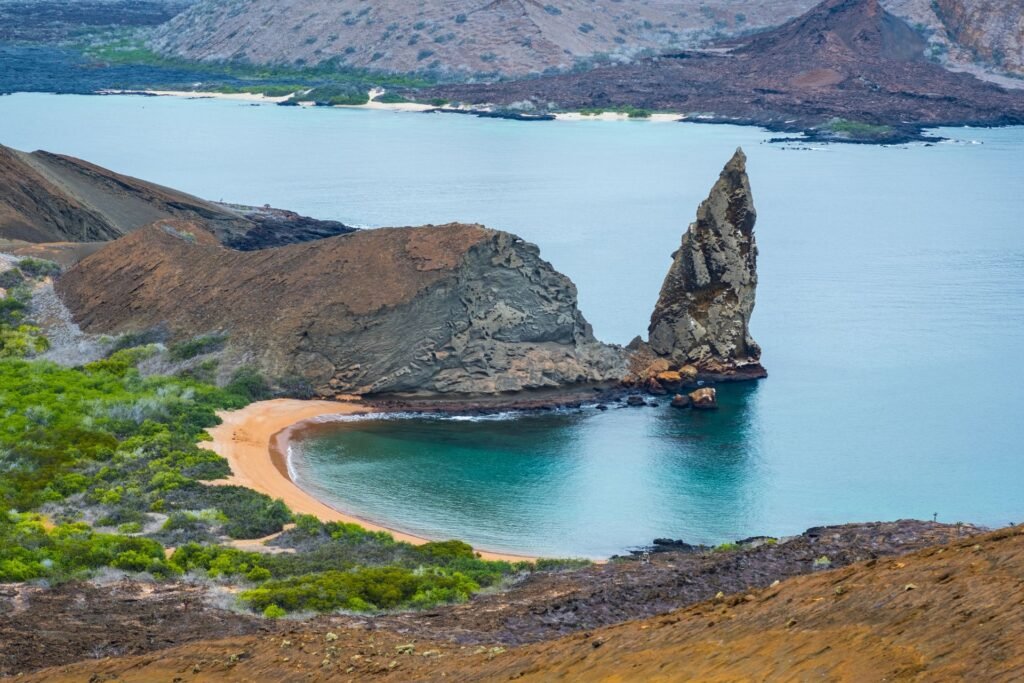
11. Galápagos Islands, Ecuador – Darwin’s Laboratory of Evolution
The Galápagos Islands represent one of the world’s most important natural laboratories, where Charles Darwin’s observations led to his theory of evolution.
This volcanic archipelago, located 600 miles off the coast of Ecuador, contains unique ecosystems and endemic species that continue to provide insights into evolutionary processes.
The islands’ isolation has resulted in extraordinary biodiversity, with many species found nowhere else on Earth. Giant tortoises, marine iguanas, Darwin’s finches, and numerous other endemic species demonstrate adaptive radiation and natural selection in action. The fearless behavior of many animals, having evolved without natural predators, allows for unprecedented wildlife viewing opportunities.
Each island presents distinct ecosystems and species adaptations. The marine environment surrounding the islands supports unique underwater life, including marine iguanas that dive to feed on algae, penguins living at the equator, and diverse shark populations. The convergence of ocean currents creates rich feeding grounds that support this exceptional marine biodiversity.
Conservation efforts in the Galápagos face ongoing challenges from tourism, invasive species, and climate change.
Strict visitor limits, guided tours, and comprehensive management plans work to protect the islands’ unique ecosystems while allowing scientific research and educational tourism that support conservation funding.
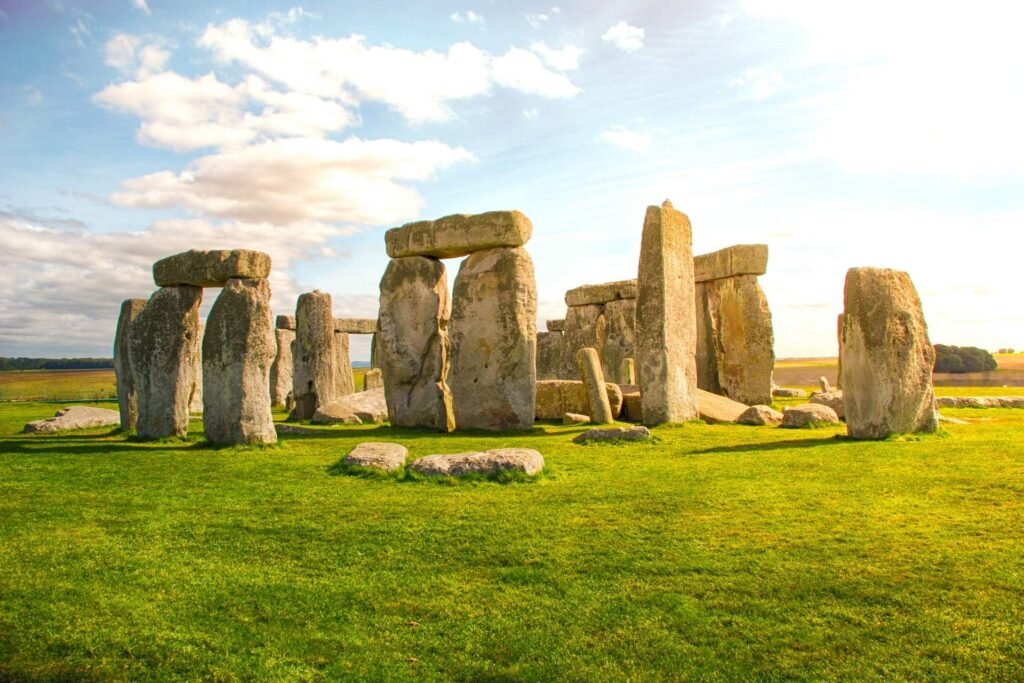
12. Stonehenge, United Kingdom – The Mysterious Stone Circle
Stonehenge represents one of humanity’s most enduring mysteries, a prehistoric monument whose purpose and construction methods continue to fascinate archaeologists and visitors.
This circle of massive standing stones, erected between 3100 and 1600 BC, demonstrates the sophisticated knowledge and organizational capacity of Neolithic peoples.
The monument’s construction occurred in several phases over more than 1,500 years. The enormous sarsen stones, some weighing up to 25 tons, were transported from nearby locations, while the smaller bluestones were brought from Wales, over 150 miles away. The precision of the construction, with carefully shaped stones fitted together without mortar, demonstrates advanced engineering skills.
Stonehenge’s astronomical alignments suggest it served as a prehistoric observatory and calendar. The monument’s axis aligns with the summer solstice sunrise and winter solstice sunset, indicating its builders’ sophisticated understanding of celestial movements.
Recent discoveries of additional stone circles and wooden structures in the surrounding landscape suggest Stonehenge was part of a larger ceremonial complex.
The monument’s cultural significance extends beyond its physical structure to its role in British cultural identity and its influence on our understanding of prehistoric societies. Ongoing archaeological research continues to reveal new aspects of the site’s construction, use, and meaning to its builders.
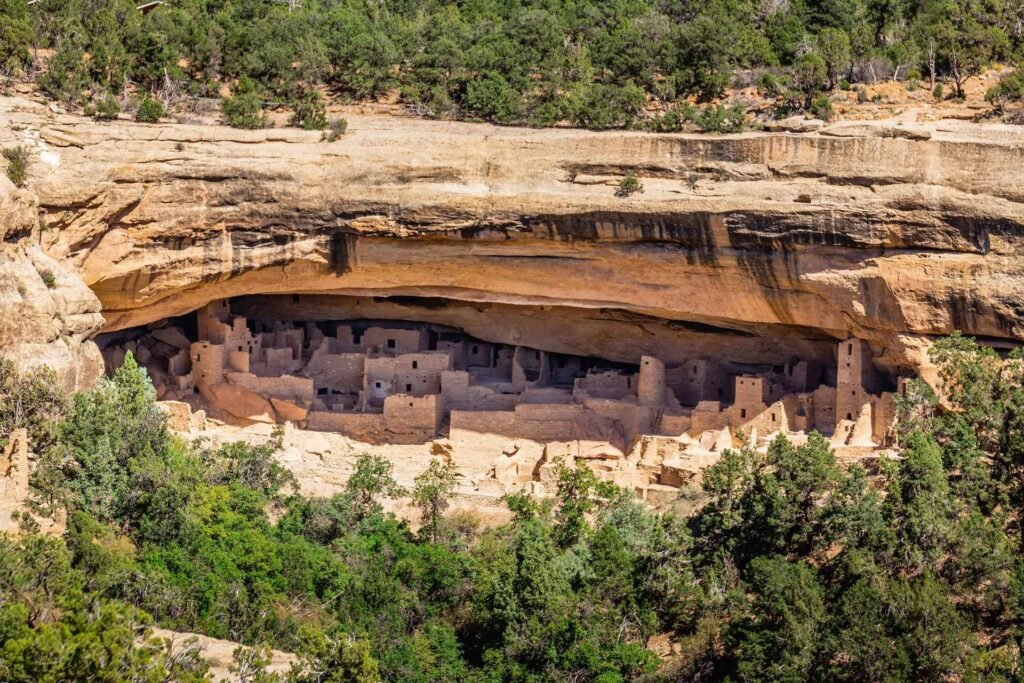
13. Mesa Verde National Park, USA – Ancestral Puebloan Cliff Dwellings
Mesa Verde preserves some of North America’s most spectacular and well-preserved archaeological sites, showcasing the sophisticated cliff dwellings built by Ancestral Puebloan peoples (formerly known as Anasazi) between 600 and 1300 AD.
These remarkable structures, built into natural alcoves in canyon walls, demonstrate advanced architectural and engineering skills adapted to the challenging high-desert environment.
The famous Cliff Palace, the largest cliff dwelling in North America, contains over 150 rooms and 23 kivas (ceremonial chambers). The structure’s construction required careful planning and sophisticated building techniques, including the transport of building materials up steep canyon walls and the precise fitting of stones without mortar.
The dwellings’ locations provided protection from weather and enemies while maintaining access to water sources and agricultural areas on the mesa top.
The Ancestral Puebloans developed innovative farming techniques, including terracing and water management systems, that allowed them to thrive in this challenging environment for centuries.
The mysterious abandonment of these sites in the late 13th century continues to puzzle archaeologists. Theories include drought, resource depletion, social conflict, and migration to more favorable locations. The preserved structures and artifacts provide valuable insights into the daily life, religious practices, and social organization of these ancient peoples.

14. Great Barrier Reef, Australia – The World’s Largest Living Structure
The Great Barrier Reef represents the world’s largest coral reef system and one of the most biodiverse ecosystems on Earth.
This living wonder, stretching over 2,300 kilometers along Australia’s northeast coast, supports an extraordinary array of marine life and provides crucial ecological services.
The reef system consists of over 2,900 individual reefs and 900 islands, creating a complex ecosystem that supports over 1,500 species of fish, 400 species of hard coral, and numerous other marine species.
The reef’s biodiversity rivals that of tropical rainforests, earning it recognition as one of the world’s most important natural heritage sites.
The reef’s formation began over 20 million years ago, with the current structure developing over the last 20,000 years. The living coral polyps that build the reef create complex three-dimensional structures that provide habitat for countless species. The reef’s health depends on delicate ecological balances that can be disrupted by human activities and climate change.
Conservation challenges facing the Great Barrier Reef include climate change, water pollution, coastal development, and tourism pressure. Coral bleaching events, caused by rising ocean temperatures, pose the greatest threat to the reef’s survival. Comprehensive management plans and international cooperation are essential for protecting this natural wonder for future generations.
Planning Your UNESCO World Heritage Journey
Visiting UNESCO World Heritage Sites requires careful planning to ensure both meaningful experiences and responsible tourism. Many sites have implemented visitor limits, advance booking requirements, and specific guidelines to protect their integrity while allowing public access.
Research each site’s specific requirements before traveling. Some locations require permits, guided tours, or timed entry tickets that may need to be booked months in advance. Understanding local customs, dress codes, and cultural sensitivities ensures respectful visits that contribute positively to local communities.
Consider the best times to visit based on weather, crowd levels, and seasonal considerations. Many sites offer different experiences throughout the year, from seasonal wildlife viewing opportunities to cultural festivals that provide deeper insights into local traditions.
Sustainable tourism practices help preserve these irreplaceable sites for future generations. Choose local guides and accommodations when possible, follow all site regulations, and minimize environmental impact through responsible behavior. Remember that these sites belong to all of humanity and require collective care and respect.
The Responsibility of Heritage Tourism
UNESCO World Heritage Sites face increasing pressure from tourism, climate change, and development. As visitors, we bear responsibility for ensuring our presence contributes to conservation rather than degradation. This means following site rules, staying on designated paths, and respecting local communities and their cultural practices.
The revenue generated by heritage tourism can provide crucial funding for conservation efforts and local economic development. However, overtourism can damage fragile sites and disrupt local communities. Choosing off-season visits, supporting local businesses, and engaging with educational programs helps create positive tourism impacts.
These 15 UNESCO World Heritage Sites represent just a fraction of the world’s protected heritage locations. Each site offers unique insights into human creativity, natural processes, and cultural development. By visiting these places with respect and understanding, we become part of the global effort to preserve and protect our shared heritage.
The experiences and memories gained from visiting these extraordinary places often prove transformative, deepening our understanding of human achievement, natural wonder, and our interconnectedness with cultures and environments around the world.
These sites remind us that some things transcend national boundaries and belong to all of humanity—treasures that deserve our protection and reverence for generations to come.
If you liked this article, check the other ones on Majestic Mondo website. Consider joining the Instagram community as well, to fully enjoy the beauty of our planet.




Leave a Reply